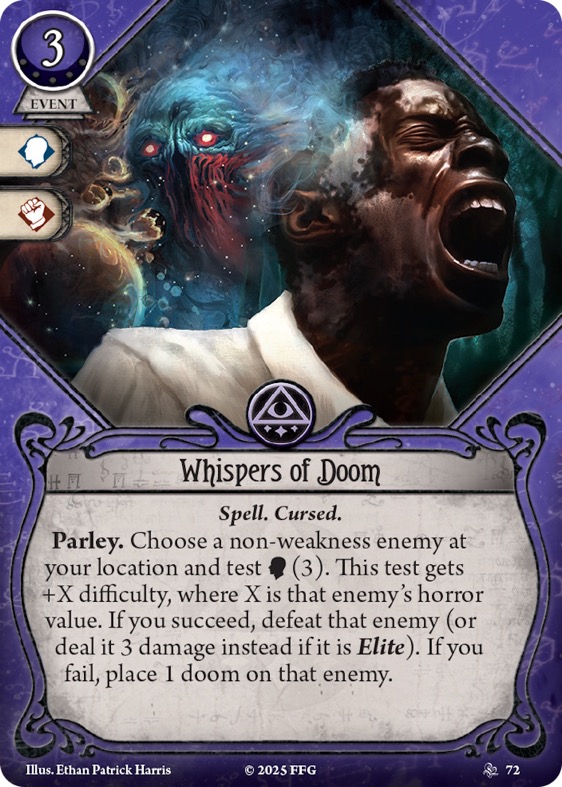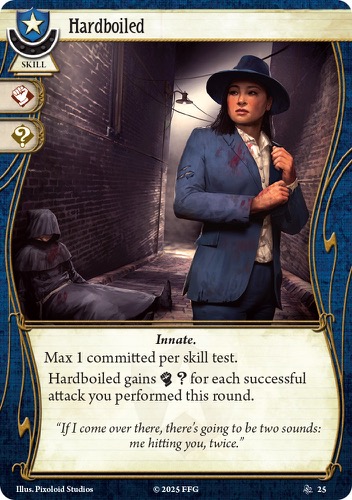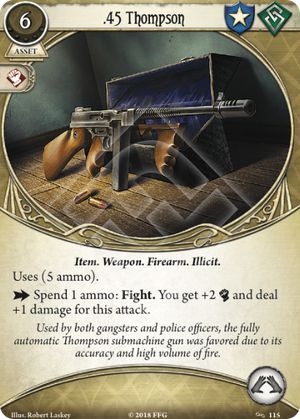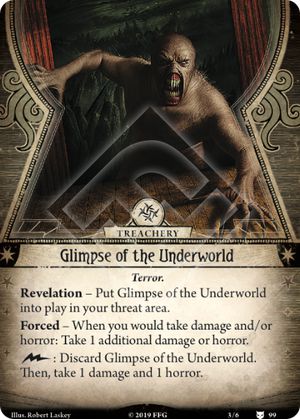
Would you like to reduce the difficulty of attacking a Mindless Dancer by 2 and eliminate it in a single action? I thought so!
Have you let things get out of hand in Hemlock, and are staring down the barrel of a Crystal Parasite or accidentally chonky Poisonblossom?
Perhaps that Conglomeration of Spheres would better spend their days as a collection of dissociated orbs?
Perhaps you've taken Nasht's words to heart, and you know what the true weapon is in the Dreamlands.
Or maybe there's just some other high health nasty you'd like done with in one go, like a Corpse Dweller, Deep One Bull, Apex Strangleweed or Oozewraith.
The card is expensive, as it should be.
You have to take and pass a test, as you should do.
You probably need to be a mystic, but you're murdering monsters with your voice, not a gun (or maybe a 5xp card.)
You could even wear Fine Clothes, but why dress smartly when you can just bellow at fools in your dressing gown?
The card is level 0 and is excellent across so many campaigns. If you can slot a one-of copy, why not?
Now excuse me as I pack two copies for Before the Black Throne.




